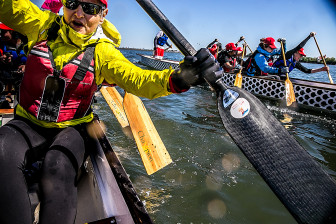
DEP
Beauty in Alley Creek. Not visible are the high fecal coliform levels that remain despite millions of dollars of city work there to date.
The decades-long process for getting New York City waterways to meet the federal Clean Water Act by managing sewage overflows is stuck in neutral thanks to a legal dispute between the de Blasio and Cuomo administrations.
In 60 percent of New York City, sewage from toilets, tubs and sinks uses the same piping as stormwater, all flowing to treatment plants. When it rains hard, the plants are overwhelmed and raw sewage is kicked into the city’s rivers, canals, creeks and bays.
Efforts to control these combined sewage overflows (or CSOs) go back decades. In 2012 the city signed a comprehensive agreement with New York State to reduce CSOs using a combination of grey and green infrastructure.
According to the agreement, the city’s Department of Environmental Protection (DEP) has to issue 10 Long Term Control Plans for specific waterways affected by CSOs, plus one overarching the entire city. Each plan is supposed to “identify, with public input, appropriate CSO controls necessary to achieve waterbody-specific water quality standards (WQS), consistent with federal CSO policy and the water quality goals of the Clean Water Act,” according to the agreement.
In other words the city has to determine to what extent every single waterway can reach the standards of the Clean Water Act of 1972, which holds that every waterbody in the country should be fishable and swimmable wherever feasible.
Each LTCP drafted by the city has to be approved by the state’s Department of Environmental Conservation or DEC. New York State basically acts as an executor for the U.S. Environmental Protection Agency and has to make sure that the city is not aiming too low when it comes to achievable water quality standards.
That means that a long-term solution to the local CSO problem depends on the city and state reaching agreement. And the relationship between City Hall and Albany is one where, as everyone knows, the waters run deep.
The battle of Alley Creek
Issue arose at the very beginning. The LTCP for Alley Creek – a waterbody in Queens that drains into Little Neck Bay – was the first overflow reduction plan submitted to the state in 2013. DEC rejected it on the grounds that it wasn’t ambitious enough and didn’t meet the federal requirements on water quality. The city argued that the state was being unreasonable in its requests and resubmitted the plan in June 2014. The plan was rejected again in December 2014, prompting the city to file a lawsuit against the state arguing that Albany’s “disapproval was irrational, arbitrary, capricious and an abuse of discretion.” As of now the city submitted three long-term plans for the Alley Creek, none of which have been approved, and the lawsuit is pending.
“The state is not approving anything,” says Sean Dixon from Riverkeeper, a non-profit organization dedicated to defending the Hudson River.
Since the Alley Creek litigation, the city has submitted long-term plans for three other waterways: Westchester Creek and Hutchinson River in the Bronx and Flushing Creek in Queens, following the original timeline that requires all 11 long-term plans to be submitted by 2017. But none of the three has been revised or approved by the state, and is not clear when this will happen.
“The only requirement is for the city to submit the plans on time, but there is no state’s timeline for approval,” Dixon says.
The concern is that until the litigation is resolved, the LTCP process will reach an impasse because neither the city nor the state wants to discuss the same issues over and over again on every single plan.
“The state wants to set some standard before going forward,” says Larry Levine, senior attorney in the water program at the Natural Resources Defense Council.
Now there are signs the DEP is falling behind schedule. The Flushing Bay LTCP was expected at the end of June of this year but has been postponed to June 2017.
A faint indication of behind-the-scenes dialogue appeared early this year. The city regularly posts online a quarterly report on the progress made in LTCPs submissions. In the one posted in January, the city announced that, “DEP anticipates that a proposed 2016 CSO Order on Consent (“proposed draft consent order”) will be available for public review and comment in the next quarter.” This suggested that the city was renegotiating the agreement signed with the state in 2012.
Strangely enough, in the following quarterly report there is no mention of this “proposed draft” and either DEP nor DEC has released further information about it.
Arguments over methods
In the last 30 years the CSO situation has improved enormously and New York’s CSO capture rate went from 30 percent in the 80s to over 72 percent today, thanks to expanded retention facilities. But the problem is still far from solved. Every year 30 billion gallons of raw sewage gets discharged in city waterways. Half of it is discharged from 15 outfalls located for the most part along the East River and Flushing Bay.
This happens mostly when it rains. And it’s going to rain more.
“Looking ahead, climate change is a really big factor. We are going towards a continuous increase in rainfall,” says Levine. Global warming will make extreme weather events more frequent and that will mean more CSOs too. “We need to build for the future.”
A recent report from Riverkeeper showed how water quality quickly decreases after a storm because of CSOs and runoffs. The findings were a reminder that while New York City’s park planners, real-estate developers, joggers and bikers have embraced the waterfront, they still have to be careful to look, not touch.
“We are spending lots of money to bring people to the water’s edge but you can’t get close to the water after it rained because its smell or you cannot use it because it’s toxic,” says Dixon.
This is what makes the LTCP process so important. But the delays are far from the only cause of tension in the process.
In each long-term CSO-control plan, DEP outlines the cost of different actions and infrastructure aim to reduce overflows and then selects the most cost effective ones. Advocates say that by focusing too much on budgeting, DEP won’t achieve the Clean Water Act goal of swimmable/fishable waters.
“It all comes back to cost,” says Levine. For instance, DEP sometimes favors chlorination as a way to reduce fecal bacteria in the water because it’s cost effective, but critics point out that it damages marine life in the long run. “To solve an environmental problem by creating another one is not a good idea,” says Levine.
The use of chlorine is an issue in the early discussions about the Flushing Bay plan. Akila Simon is part of the Empire Dragon Boat, a rowing team of breast cancer survivors that practices and races in Flushing Bay and is closely following the LTCP process. “They want to dredge and chlorinate, that’s the only strategy we are hearing,” she says. “But by doing that you are not eliminating or reducing outflows, you are just taking away sediments and creating another environmental problem.”
The Guardians of Flushing Bay–a coalition of Dragon Boat teams, other human-powered boaters, environmentalists, and area residents– submitted in January a letter to the DEP asking for a more comprehensive plan that invests in gray infrastructure to reduce overflows. “DEP’s prime consideration must be water quality and not cost,” they wrote.
Delays’ pros and cons
Simon thinks the delay in the city’s submission of the Flushing Bay plan has something to do with the amount of criticism people showed during the LTCP public hearings phase. “People are becoming more aware, showing up at the meetings and challenging what the city is putting forward for the plan,” she says.
By that token, there could be pros as well as cons to a delay. More community engagement could occur. And there would be more opportunity to include more stakeholders in the planning process, like La Guardia airport—which is on the verge of a multibillion-dollar redevelopment – and developers interested in the Flushing Bay waterfront. Both could affect the kind of runoff the bay has to absorb.
But the delays in the LTCP process could affect other initiatives to control water pollution. Federal and state regulators are increasingly on the outflow from separate sewer systems—those where household wastewater and stormwater each have their own sewer pipes. Those pipes typically carry stormwater right to the city’s waterways. While that water doesn’t contain sewage, it often carries other pollutants. The city is under new pressure to begin addressing so-called MS4 (for Municipal Separate Storm Sewer System) runoff, but might be reluctant to do so if the CSO to-do list remains in flux.
Mainly, the disagreement between the state and the city is damaging because, as their name implies, long-term plans take years to implement. Each has an official 20 year life span.
So the city and state are now stuck on the foothills when the real mountains lie ahead.
“At this point it comes to political will and public pressure to move things forward,” says Levine.
Click to read and hear the 2015 joint City Limits/WNYC investigation









